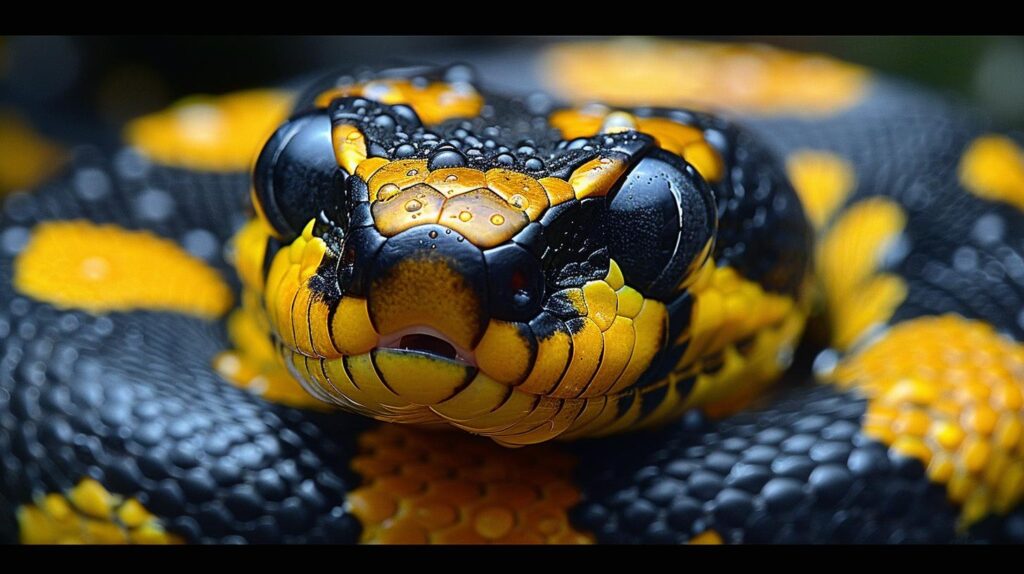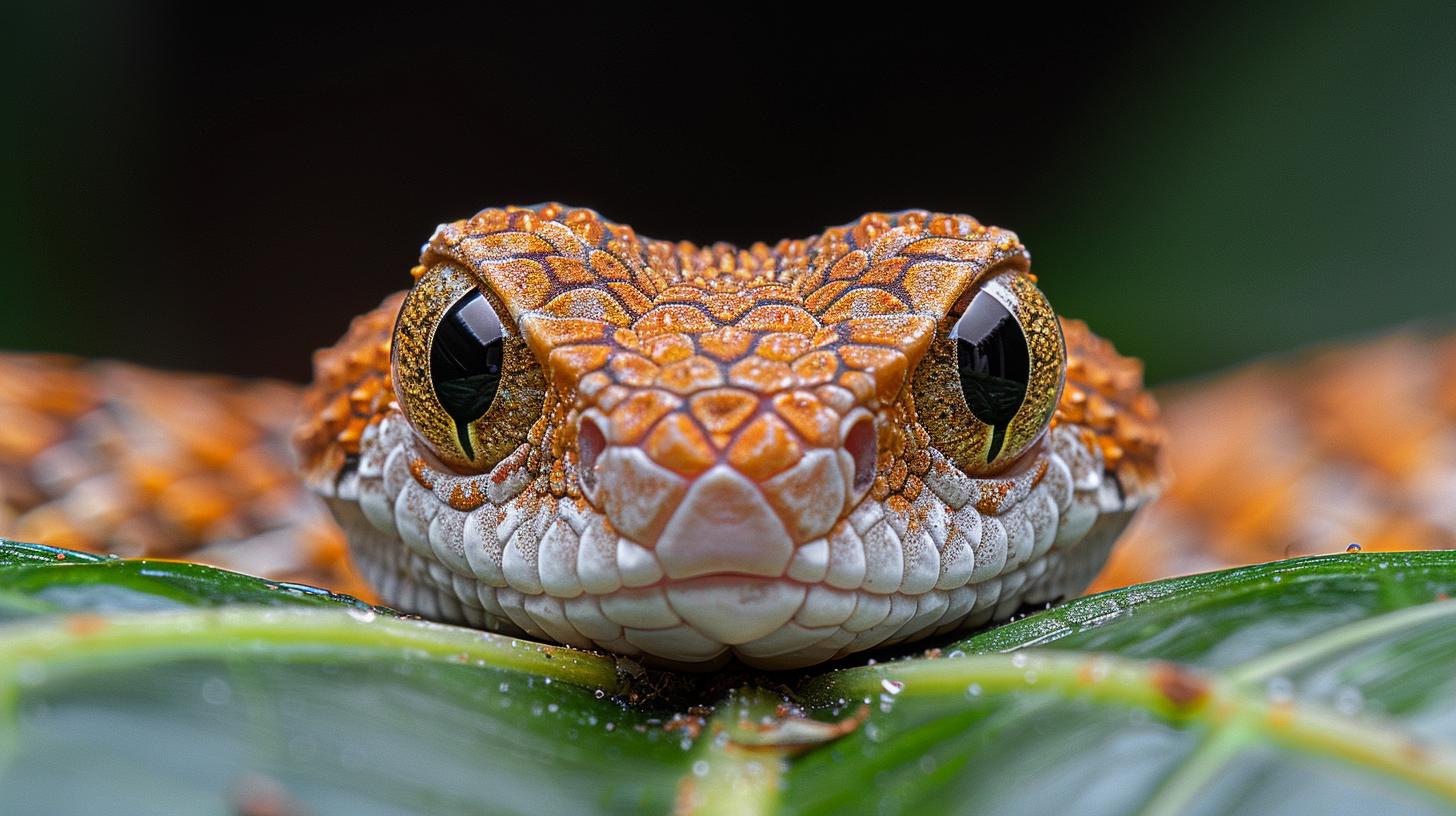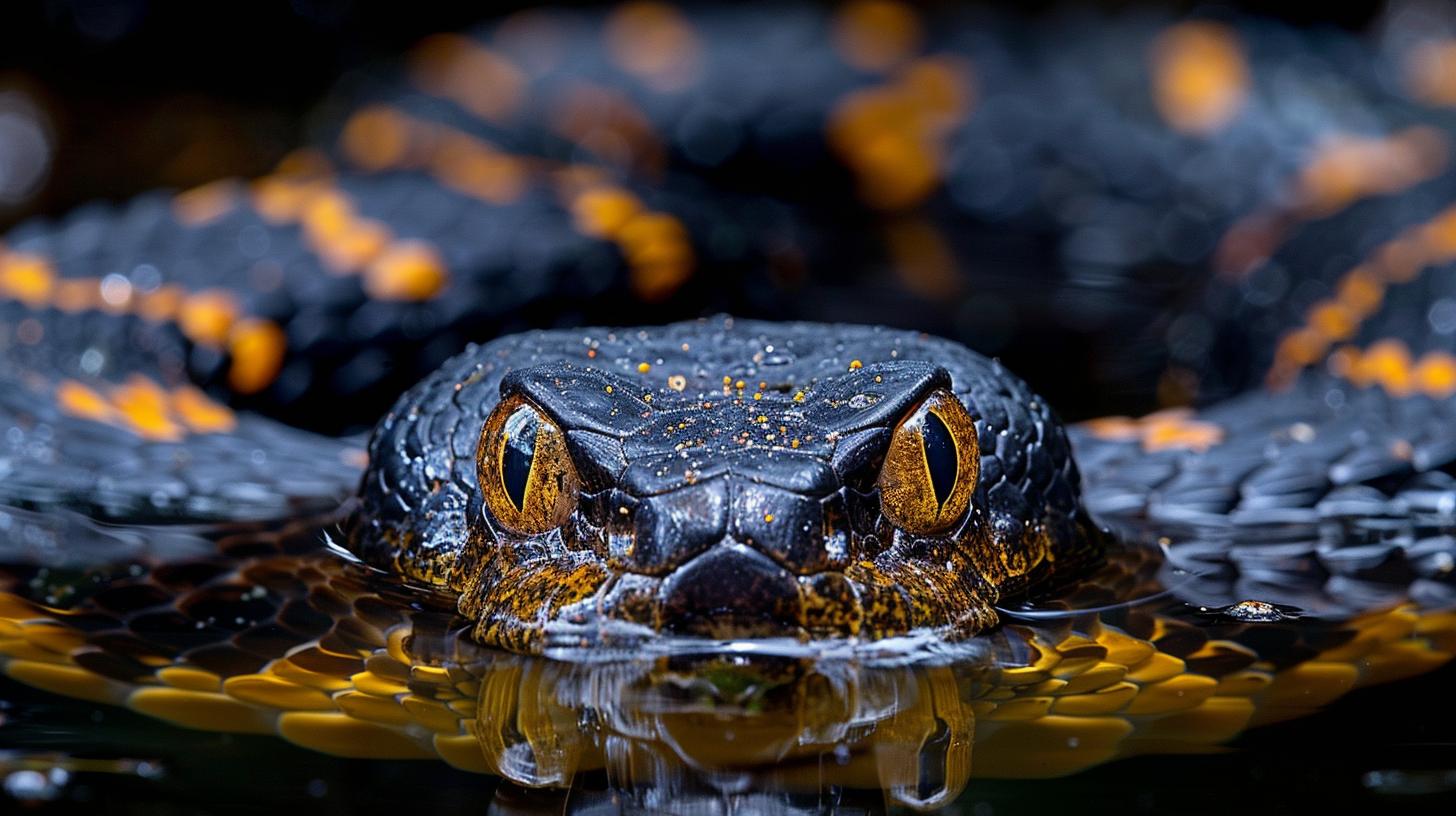3 Key Signs Your Reptile Has Metabolic Bone Disease

Understanding Metabolic Bone Disease in Reptiles
Metabolic Bone Disease (MBD) in reptiles is a significant concern, affecting their health and quality of life. As pet owners, the well-being of our scaly companions is paramount, making awareness and early detection of MBD crucial. This condition not only impairs their physical structure but also influences their behavior and overall vitality. In the world of reptile care, understanding the nuances of MBD becomes essential to prevent and manage this ailment effectively.
MBD encompasses a range of disorders resulting from improper mineralization of the bones, making them weak and susceptible to fractures. The disease often stems from deficiencies in calcium, phosphorus, or vitamin D3 - all crucial for healthy bone development in reptiles. Unfortunately, MBD is not rare among captive reptiles due to the challenges in replicating their natural habitat and diet. The lack of adequate UV light exposure and nutritional imbalances are key contributors that pet owners must vigilantly monitor.
The relationship between nutrition, environmental conditions, and MBD cannot be overstated. A balanced diet rich in necessary minerals and vitamins is fundamental in staving off this debilitating condition. In nature, reptiles get ample exposure to sunlight which helps metabolize calcium through Vitamin D3 synthesis; something that needs careful imitation in a household setting.
Ensuring your pet's enclosure mimics their natural environment as closely as possible with appropriate UV lighting can significantly reduce the risk of developing MBD. Recognizing how vital these elements are sets the stage for proactive management strategies that help maintain the health and happiness of your reptilian friend.
The Crucial Role of Nutrition and Environment
The relationship between nutrition, environment, and the health of reptiles is indisputably significant. Metabolic Bone Disease (MBD) in reptiles often arises from inadequate dietary practices and poor habitat conditions. These elements play a fundamental role not only in preventing MBD but also in the overall wellness of these creatures.
Dietary insufficiencies, particularly a lack of calcium or an imbalance between calcium and phosphorus, directly contribute to the development of MBD. Simultaneously, inadequate UVB light exposure hinders the metabolism of calcium in reptile bodies, further exacerbating the chances of this disease.
With regards to diet, ensuring that your reptile receives a balanced intake of vitamins and minerals is paramount. This involves providing a variety of foods rich in calcium and vitamin D3 to promote healthy bone development. Live insects dusted with calcium supplements can be an effective way to increase your pet's calcium intake.
However, it's not just about what they eat; how they metabolize these nutrients is equally critical. This highlights the importance of UVB lighting in a reptile's habitat as it facilitates the synthesis of vitamin D3, which is essential for calcium absorption.
| Nutrient | Importance |
|---|---|
| Calcium | Essential for bone health and muscle function. |
| Vitamin D3 | Necessary for calcium absorption. |
| UVB Light | Facilitates synthesis of vitamin D3. |
Moreover, environmental enrichment and proper heating setup play crucial roles in stimulating natural behaviors and physiological processes that guard against health issues like *MBD in reptiles*. For instance, creating temperature gradients within the enclosure allows reptiles to regulate their body temperature by moving between warmer basking areas and cooler zones. This behavior encourages physical activity which is beneficial for metabolic processes including those involved in bone density maintenance.
Lastly, monitoring humidity levels depending on your specific type of reptile ensures their skin remains hydrated constituting to general health promotiveness which indirectly supports their ability to metabolize nutrients effectively. An environment that simulates their natural habitat as closely as possible contributes to their overall well-being potentially warding off diseases like MBD by engaging them physically and mentally.
Maintaining these aspects - diet enriched with vital nutrients coupled with an adequate setup offering ample UV exposure alongside optimized temperature & humidity levels - stands as critical preventive measures against Metabolic Bone Disease. Furthermore, it lays down a foundation for addressing other potential health risks ensuring your scaled companions lead healthy lives full of vitality.
Sign #1
Understanding the impact of metabolic bone disease (MBD) on reptiles is crucial for any reptile owner. This condition not only affects their physical health but also influences their behavior in significant ways.
One of the first signs that may indicate the presence of MBD in reptiles is a noticeable change in their activity levels, characterized by weakness and lethargy. It's essential to recognize these alterations promptly as they can provide early indicators of a potentially serious condition necessitating immediate attention and care.
The vitality and energy levels of reptiles are often correlated with their overall wellness. When a reptile exhibits unusual lethargy or appears weaker than normal, it could be signaling an underlying health issue such as MBD This disease disrupts the mineral balance within their bodies, leading to various complications, including reduced mobility and strength. Observing your pet's behavior and comparing it with its usual activity patterns is key to identifying these distress signals early on.
Contrasting Behaviors
Under normal circumstances, healthy reptiles display a variety of behaviors such as actively exploring their environment, climbing, or in the case of terrestrial species, walking around with ease. However, when afflicted with MBD in reptiles, there's a marked decrease in these activities. You might notice your pet spending excessive time lying down or showing reluctance to move even when stimulated. Such discrepancies between their typical behavior and current state should raise red flags about their well-being.

Physical Manifestations of Weakness
Apart from behavioral changes, physical signs also accompany the lethargy caused by MBD Reptiles may struggle to support themselves or maintain stability while moving. In severe cases, you might observe them dragging themselves rather than walking or unable to lift their body off the ground entirely. These symptoms not only reflect the immediate effects of MBD but could also indicate potential long-term impacts on skeletal structure if not addressed promptly.
Recognizing these signs of weakness and lethargy in your reptile is an important step toward ensuring they receive the necessary care and treatment. Early detection plays a pivotal role in managing MBD effectively and preventing more severe health issues down the line. Observing your pet keenly and noting any deviations from its usual behavior can help safeguard against this common yet treatable condition among reptilian pets.
Sign #2
One of the most alarming indications that a reptile is suffering from metabolic bone disease (MBD) is the presence of soft or misshapen bones. This symptom stems from an imbalance in calcium, phosphorus, and vitamin D3, crucial components for healthy bone development and maintenance. When these elements are lacking, either due to inadequate diet or insufficient UV light exposure, a reptile's skeletal structure can become compromised.
Owners may notice that their pet's once strong limbs, tail, or jaw seem pliable or unusually shaped. Such deformities not only impair the reptile's physical appearance but also its ability to mobilize normally.
To identify these changes accurately, you should familiarize yourself with your reptile's normal posture and bone structure shortly after it becomes part of your family. This awareness will enable you to detect subtle differences as they emerge. Some common visual cues include:
- Bowed legs
- An unusual kink in the tail
- A softened or misaligned jaw
These symptoms often point towards an ongoing struggle with MBD. It is vital to act swiftly upon noticing such changes since prolonged periods without correction can lead to permanent skeletal damage.
Recognizing these signs early plays a crucial role in mitigating the adverse effects of MBD in reptiles. While some external deformities might become noticeable only after the condition has advanced, preliminary indicators can sometimes be observed through proactive examination and care practices.
Therefore, setting regular check-ups with a veterinarian experienced in reptile health becomes an essential preventive measure against MBD. These professionals can provide invaluable guidance on adjusting your pet's diet or habitat to better support its bone health.
As this section has illuminated the critical issue of soft and misshaped bones due to MBD, it naturally sets the stage for discussing further ramifications if left unaddressed and underscores the significance of timely intervention. The following section continues this exploration by delving into associated difficulties in eating or swallowing that afflicted reptiles may experience.
Sign #3
When we dive into the maternal indicators of how Metabolic Bone Disease (MBD) impacts our scaly friends, one of the more distressing manifestations is difficulty eating or swallowing This particular symptom can be a clear sign that your reptile is not just being picky about its dinner but might be suffering from something far more serious.
MBD in reptiles affects not only their skeletal structure but also influences their ability to consume food properly. As pet owners observe their reptiles on a daily basis, noticing a reluctance or struggle during feeding time should signal an immediate concern.
Understanding why your reptile may struggle with these basic functions involves recognizing how deeply MBD can affect their overall health. The disease weakens the jaw bones in affected reptiles, making it profoundly difficult for them to chew or ingest food.
In severe cases, this can lead to malnutrition, further complicating their health issues and pushing them into a downward spiral if left unaddressed. It's essential, therefore, for pet owners to remain vigilant and perceptive to even slight changes in feeding behaviors.
Link Between MBD and Feeding Difficulties
The direct correlation between MBD in reptiles and their struggles with eating or swallowing underscores the crippling nature of this disease. A robust diet rich in calcium and vitamin D3 supports bone health, yet when MBD enters the picture due to dietary insufficiencies or lack of UV light exposure, the resulting bone softness compromises the physical strength required for normal feeding activities.
Owners might notice symptoms such as drooling, which could indicate difficulty in managing saliva due to weakened jaw muscles or misaligned teeth caused by softening bones.
Symptoms Indicative of Feeding Challenges
In terms of symptomatic expressions that hint at potential eating or swallowing issues related to MBD, there are several observable signs you should be mindful of. Besides an apparent difficulty or disinterest in eating, watch for frequent mouth openings as if attempting to realign its jaw, excessive head shaking during meal times, or an outright refusal to eat foods that were previously consumed with gusto.
Each of these symptoms reflects not merely preference changes but possibly a deeper health issue tied to inadequate nutrient absorption necessary for maintaining bone density and muscle functionality.
Understanding these signs and acknowledging them as possible indicative markers of Metabolic Bone Disease is crucial for timely intervention. Recognizing the problem early on can significantly enhance treatment outcomes by allowing adjustments in diet supplementation and habitat modifications designed to reverse nutritional deficiencies before they escalate into full-blown MBD-related complications affecting your reptile's ability to feed efficiently.

Immediate Steps to Take if You Recognize These Signs
When signs of MBD in reptiles become evident, it's critical to act swiftly. Metabolic Bone Disease can progress quickly, leaving your pet in a vulnerable state if not addressed. The health implications of MBD are serious, but with prompt action and the right care, many reptiles can recover and lead healthy lives. Here's what you should do if you suspect your reptile might be suffering from MBD.
First, isolate the affected reptile if you care for multiple pets. This initial step prevents potential stress from other animals and makes monitoring and treatment easier. Next, assess your reptile's habitat to ensure its environment meets the necessary requirements for recovery. Key elements include:
- Correct UV lighting: Ensure your UV bulbs are functional and emit sufficient UVB light crucial for vitamin D3 synthesis.
- Temperature control: Verify that the habitat temperature gradients are optimal for your specific reptile species.
- Diet assessment: Review your feeding regimen to confirm it contains appropriate levels of calcium and vitamin D3.
Following these environmental checks, contact a veterinarian specializing in reptile care immediately. A professional can offer an accurate diagnosis through physical exams and X-rays or blood tests to confirm MBD.
In preparation for your veterinary visit, document any symptoms you've noticed over time, including changes in behavior or appearance. Be ready to provide detailed information on your pet's diet, supplement use, habitat setup (including light sources and temperature settings), and any recent changes to their environment or routine.
The vet may prescribe calcium supplements or vitamin D injections as part of the treatment plan alongside dietary adjustments. Follow their instructions closely and schedule regular follow-ups to monitor your reptile's recovery progress.
Remember that while addressing current symptoms is crucial, preventing future instances of MBD by maintaining a well-balanced diet rich in calcium/vitamin D3, proper UV exposure, and regular veterinary check-ups is equally important. This proactive approach helps ensure your reptile remains healthy and vibrant for years to come.
Managing and Preventing MBD in the Long Term
As we conclude our exploration into recognizing and combating Metabolic Bone Disease (MBD) in reptiles, it is critical to reflect on the broader implications of this condition. Understanding MBD's underpinnings and learning to spot its signs are just the first steps toward ensuring the health and happiness of your scaly companions. Preventing MBD demands a holistic approach; it necessitates providing a suitable environment rich in proper nutrition and adequate UV exposure.
This multi-faceted strategy underscores not only the complex interplay between diet and habitat but also highlights the dedication required from pet owners to stave off such issues. The conversation around MBD in reptiles serves as a reminder of our responsibility to these fascinating creatures, urging us towards practices that support their well-being.
Managing MBD does not stop at diagnosis or initial treatment. As outlined in our journey through identifying signs such as weakness, lethargy, bone deformities, and feeding difficulties, managing this condition is an ongoing commitment. It blends scientific understanding with compassionate care, integrating regular veterinary consultations with meticulous attention to diet and living conditions.
This blend of knowledge and action prepares pet owners to offer their reptiles a fighting chance against the debilitating effects of MBD. In transforming these insights into actionable steps, we can chart a course toward healthier lives for our reptilian friends, reflecting a shared dedication between pet owners and veterinary professionals alike.
Engaging with this issue further requires continuous learning and adaptation-qualities that passionate pet owners possess in abundance. We invite you to join us on this journey by diving into more resources available on our website.
Your quest for knowledge doesn't have to end here; immerse yourself in our extensive library of articles designed for curiosity-driven readers like you who strive for excellence in pet care. Together, let's ensure that every step we take is informed, compassionate, and conducive to fostering thriving environments for all pets-scale-covered or otherwise.
Discover more insights and deepen your understanding by browsing our related content today-your next discovery awaits.
Frequently Asked Questions
Can Reptiles Recover From MBD?
Yes, reptiles can recover from Metabolic Bone Disease (MBD), given prompt and appropriate treatment. This typically involves improving their diet with the necessary vitamins and minerals, such as calcium and vitamin D3, and optimizing their exposure to UVB lighting which is essential for calcium metabolism in reptiles.
Can MBD Be Fixed?
MBD can indeed be fixed when addressed early with a combination of dietary management, supplementation, and proper UVB lighting. The severity of the condition at the time of diagnosis plays a crucial role in the effectiveness of the treatment.
Is MBD Reversible?
MBD is reversible in many cases, especially if caught early. Reversal involves correcting dietary deficiencies and ensuring adequate UVB light exposure, which enables reptiles to properly metabolize calcium. Early intervention leads to better outcomes.
How Long Does It Take to Reverse MBD?
The time it takes to reverse MBD varies depending on the severity of the condition and how quickly treatment begins. Some improvements can be seen within weeks; however, complete recovery might take several months or even longer. Consistent care is key during this period.
What Happens if MBD Is Left Untreated?
If MBD is left untreated, it can lead to severe health issues including deformities, soft or broken bones, decreased mobility, pain, and even death in severe cases. It is critical to address the symptoms of MBD promptly to avoid such serious complications.
How Do I Know if My Reptile Has MBD?
Signs that a reptile may have MBD include swollen limbs or jaw, difficulty moving or lameness, softening or bending of the shell in turtles and tortoises, lethargy, lack of appetite, and in severe cases seizures or tremors due to low blood calcium levels. Observing these symptoms should prompt an immediate consultation with a veterinarian experienced in reptile care.
Leave a Reply
You must be logged in to post a comment.